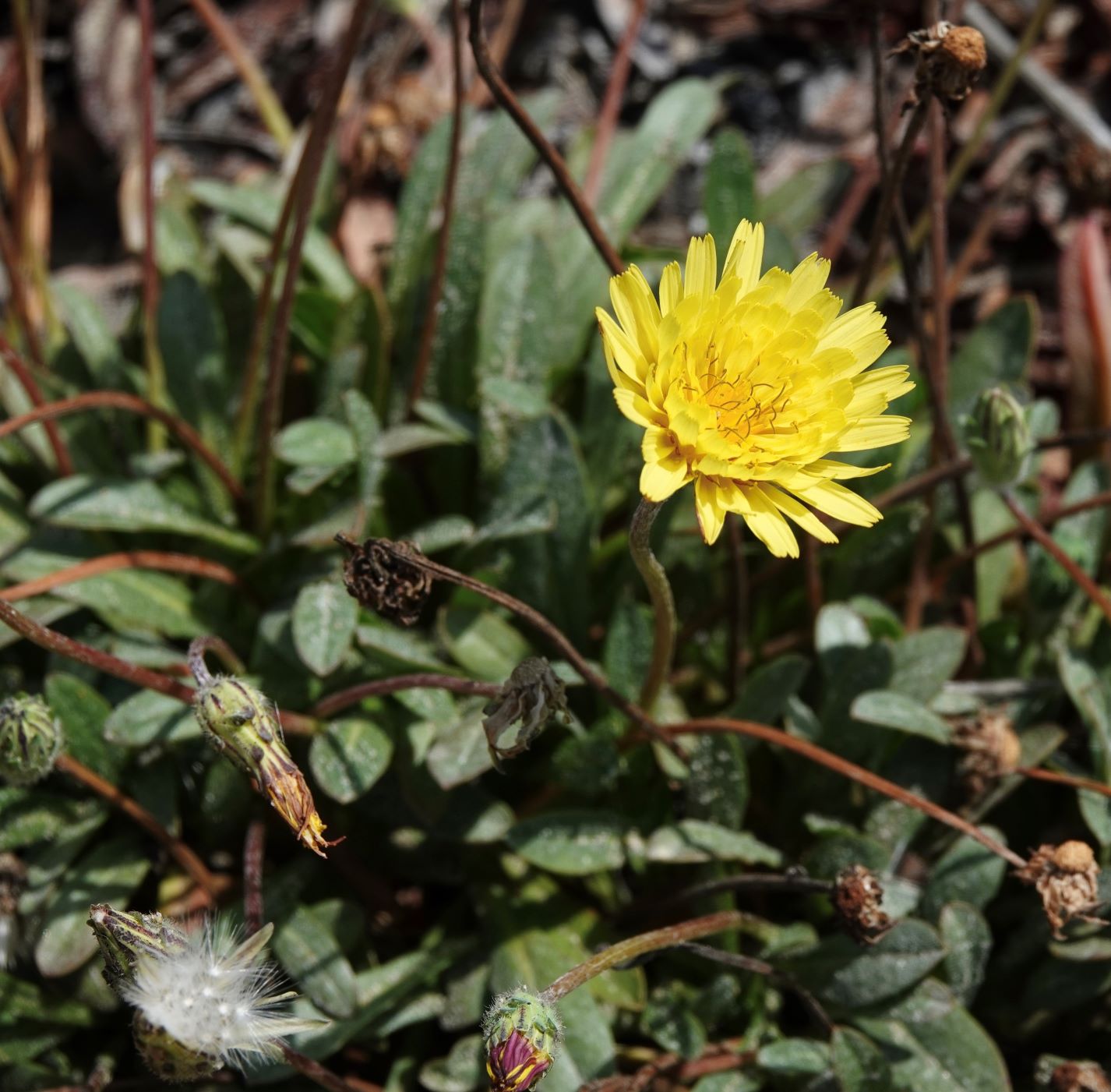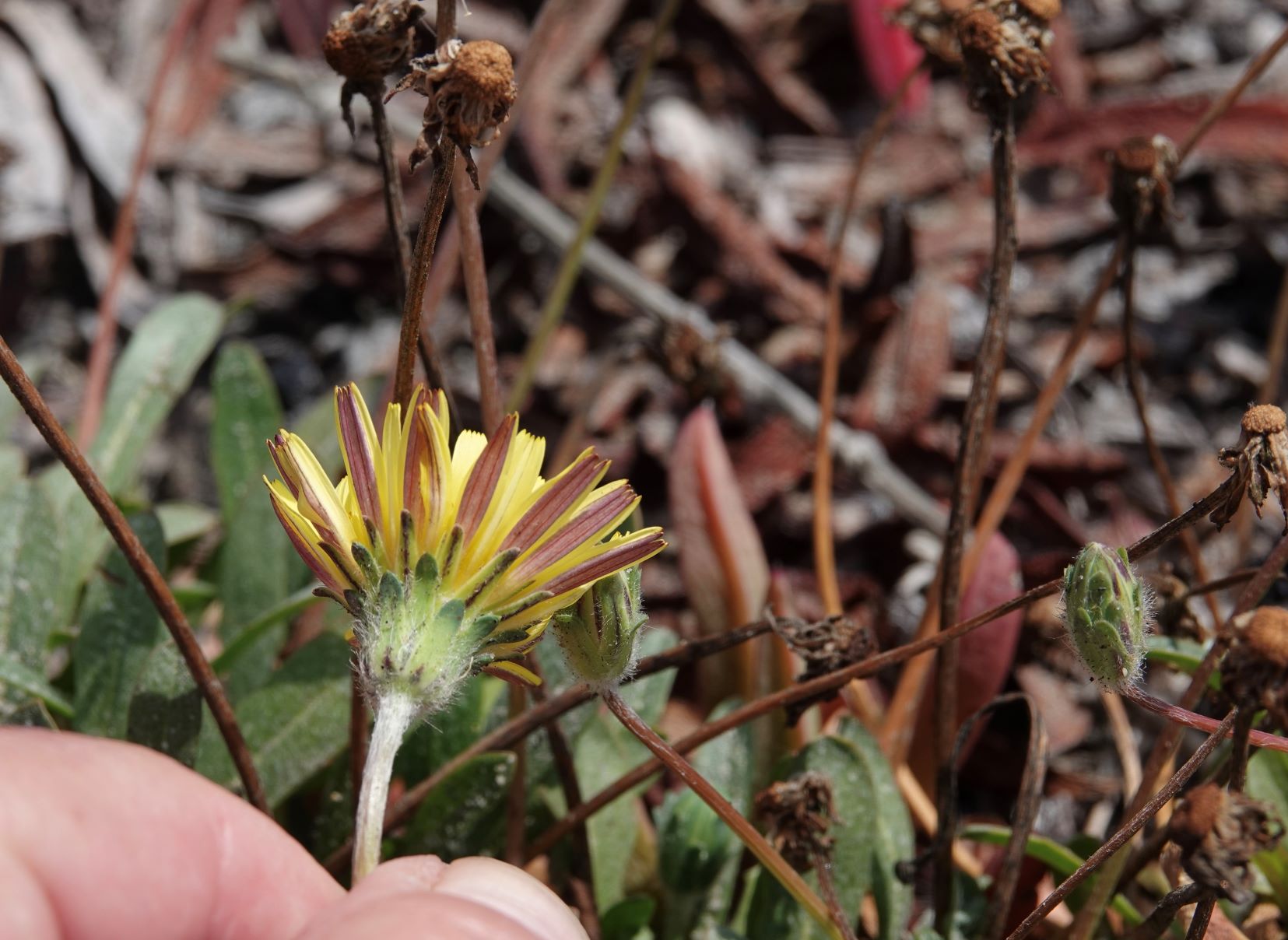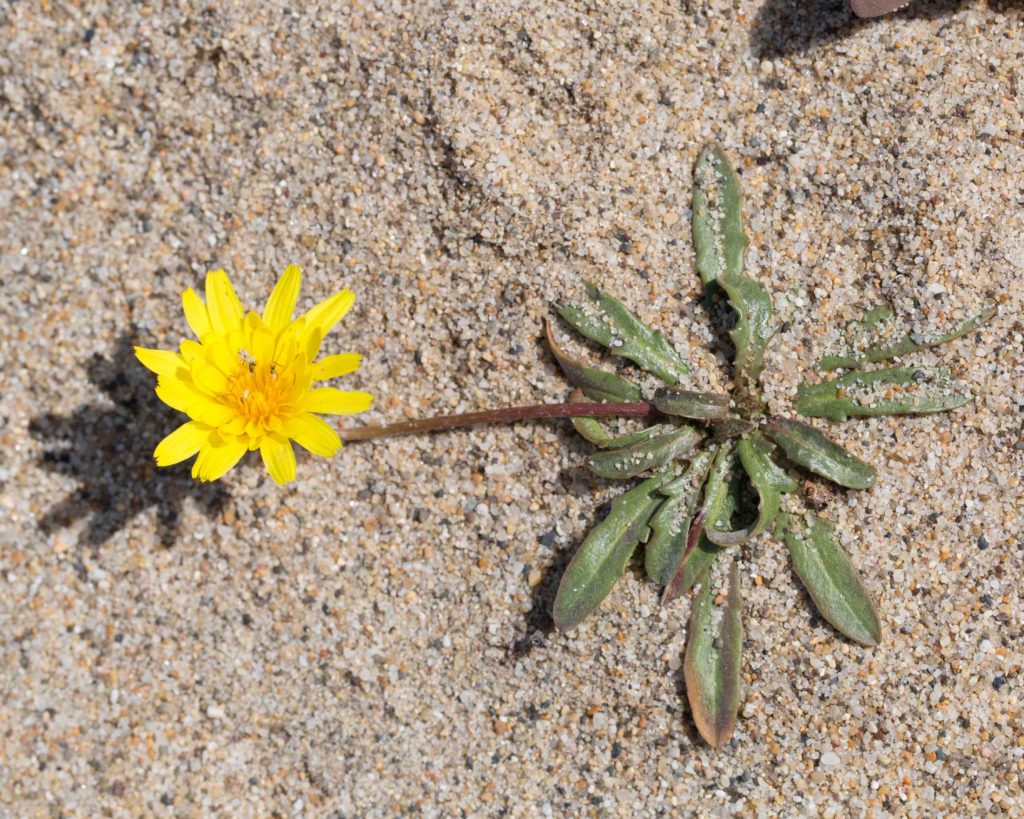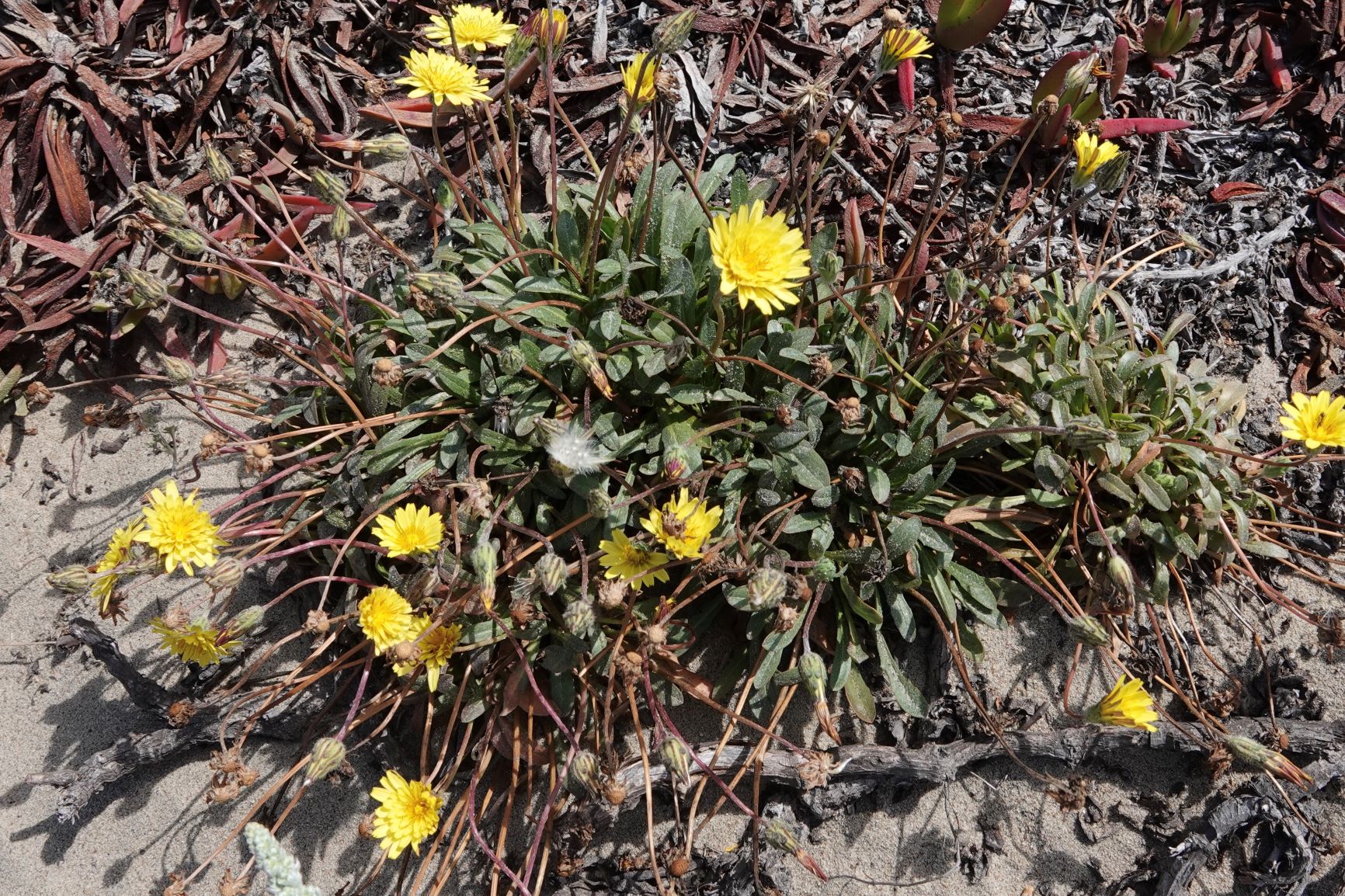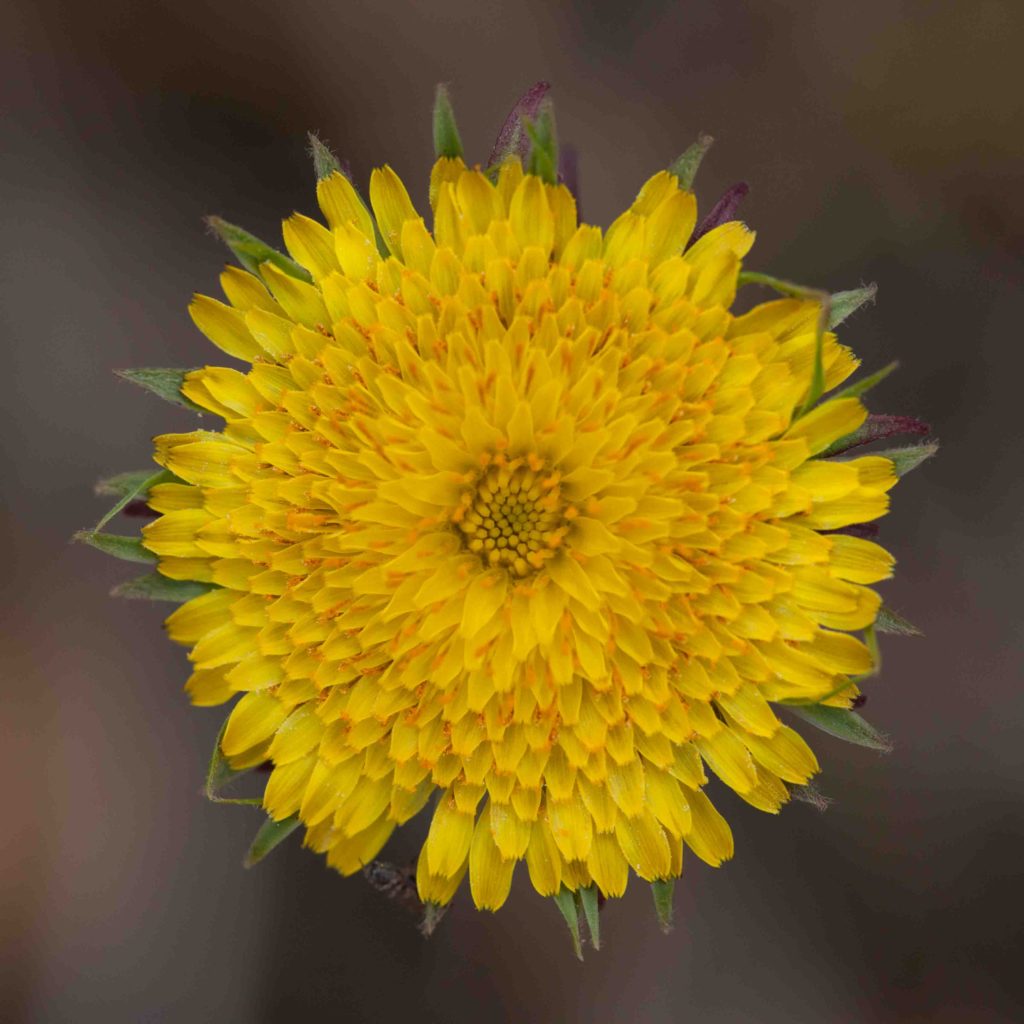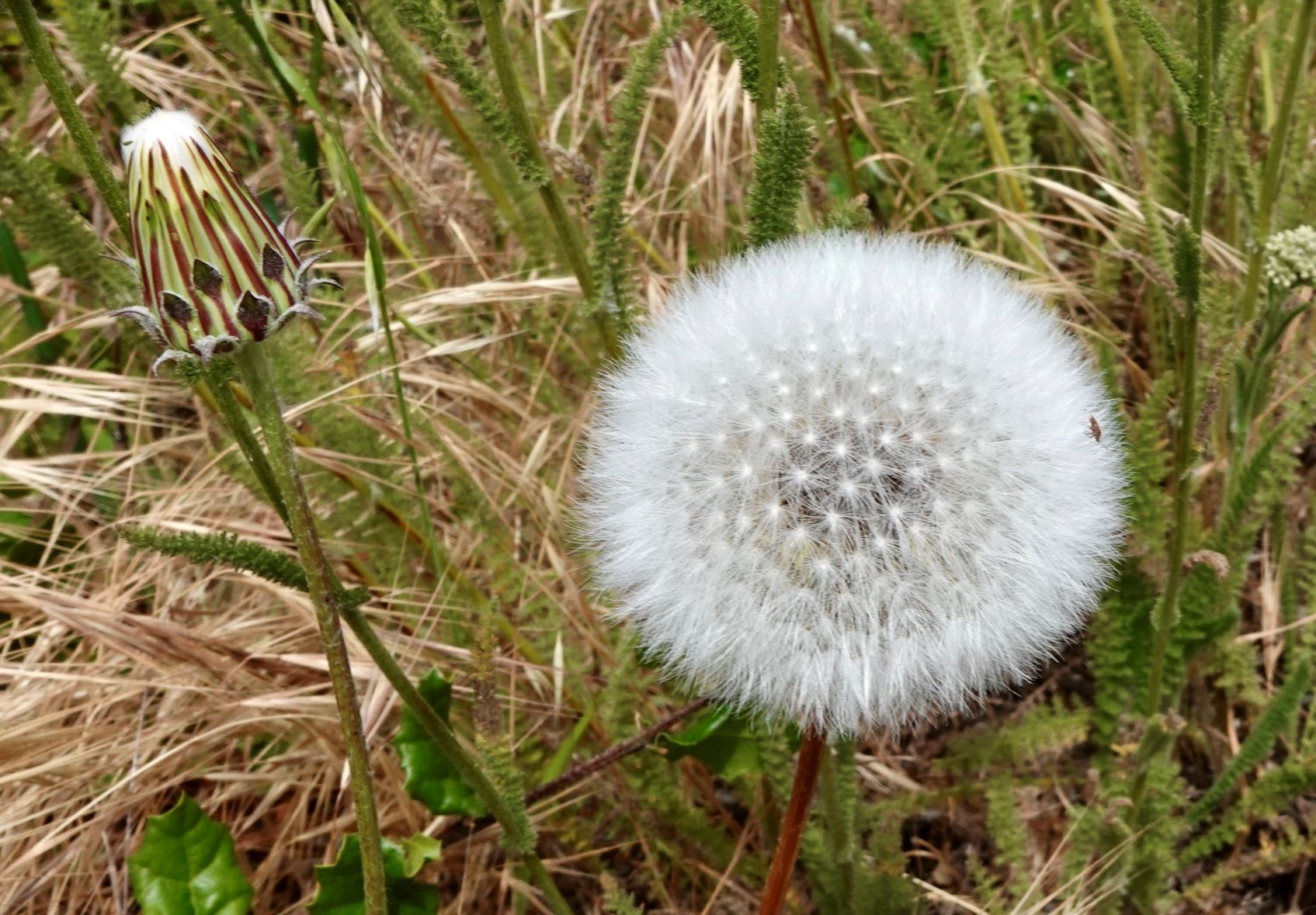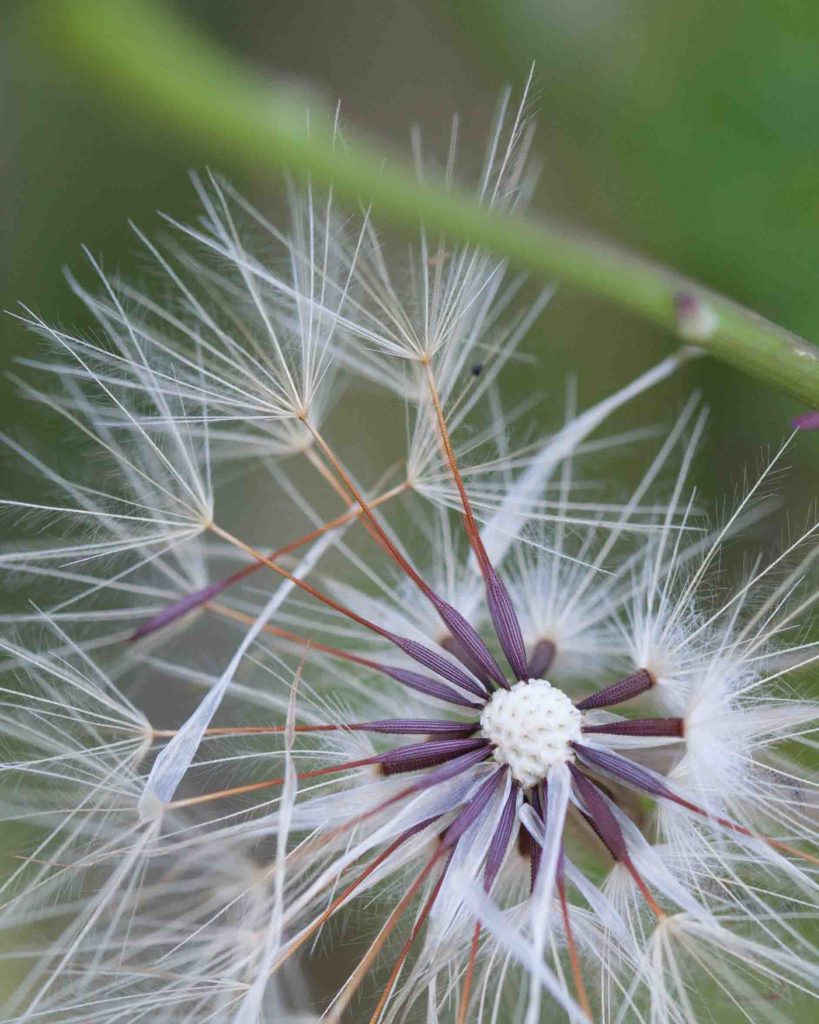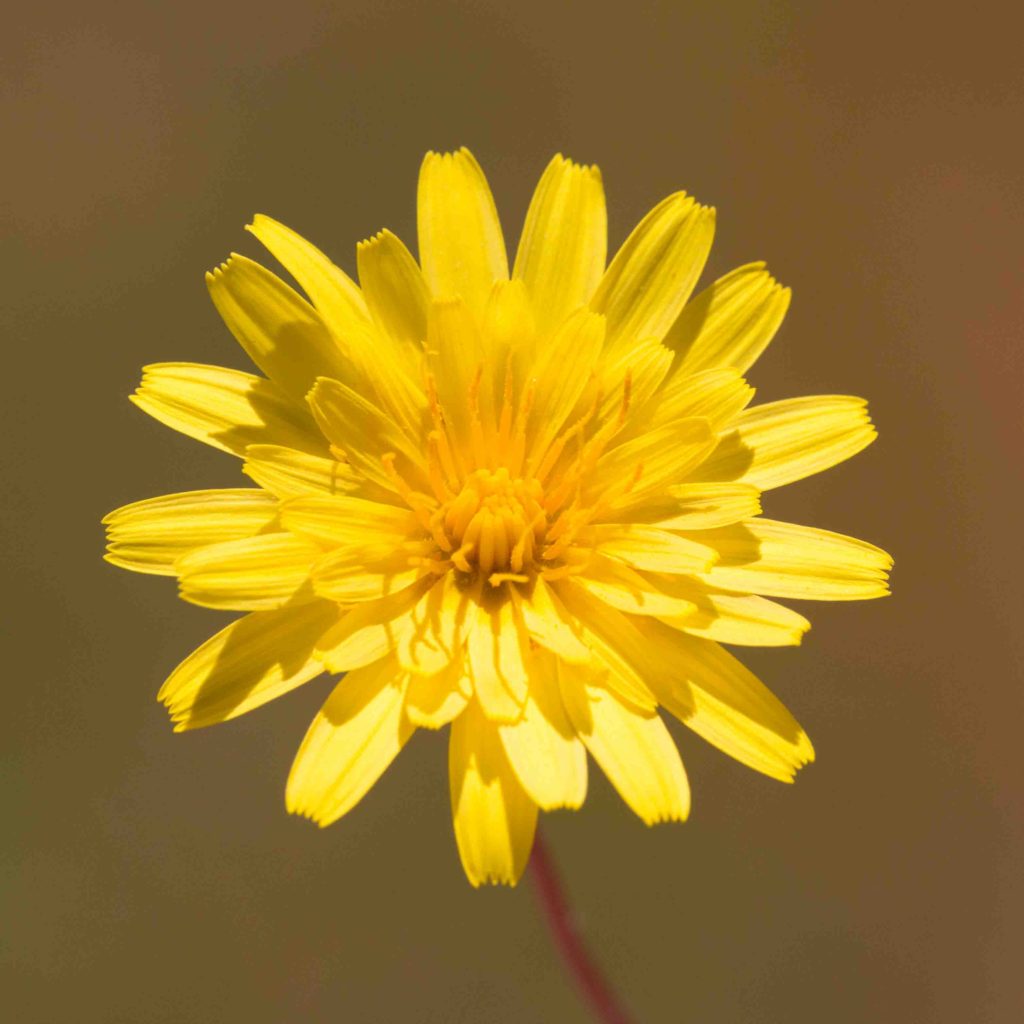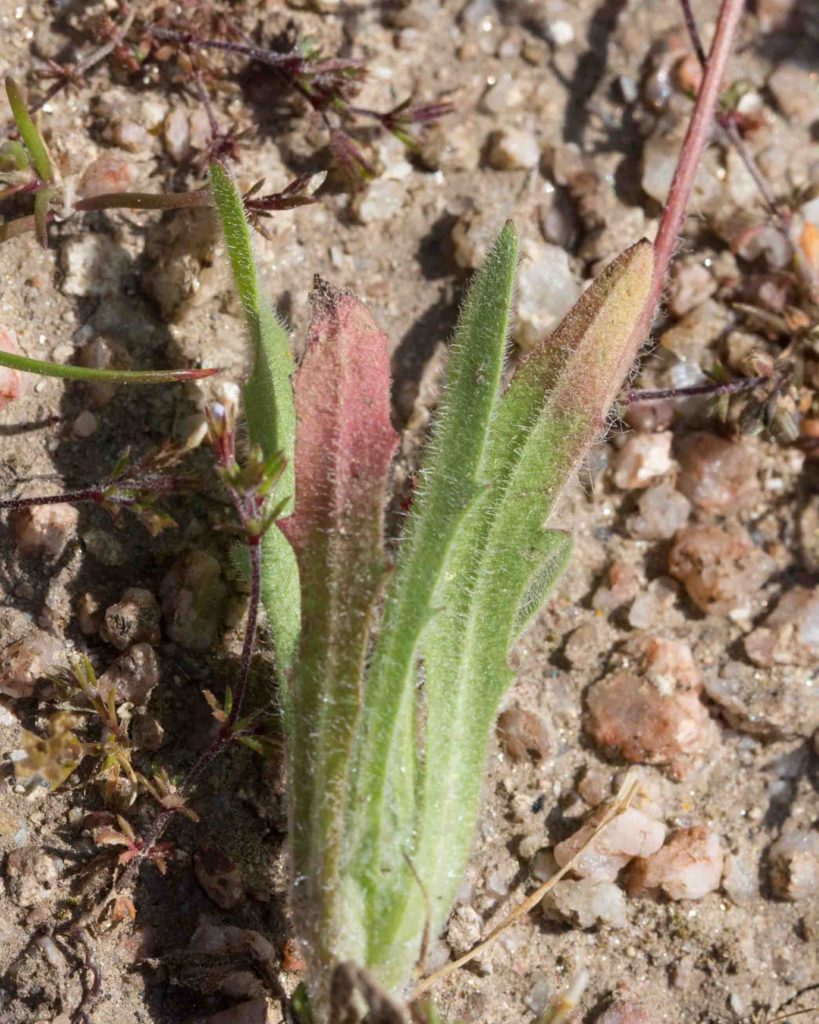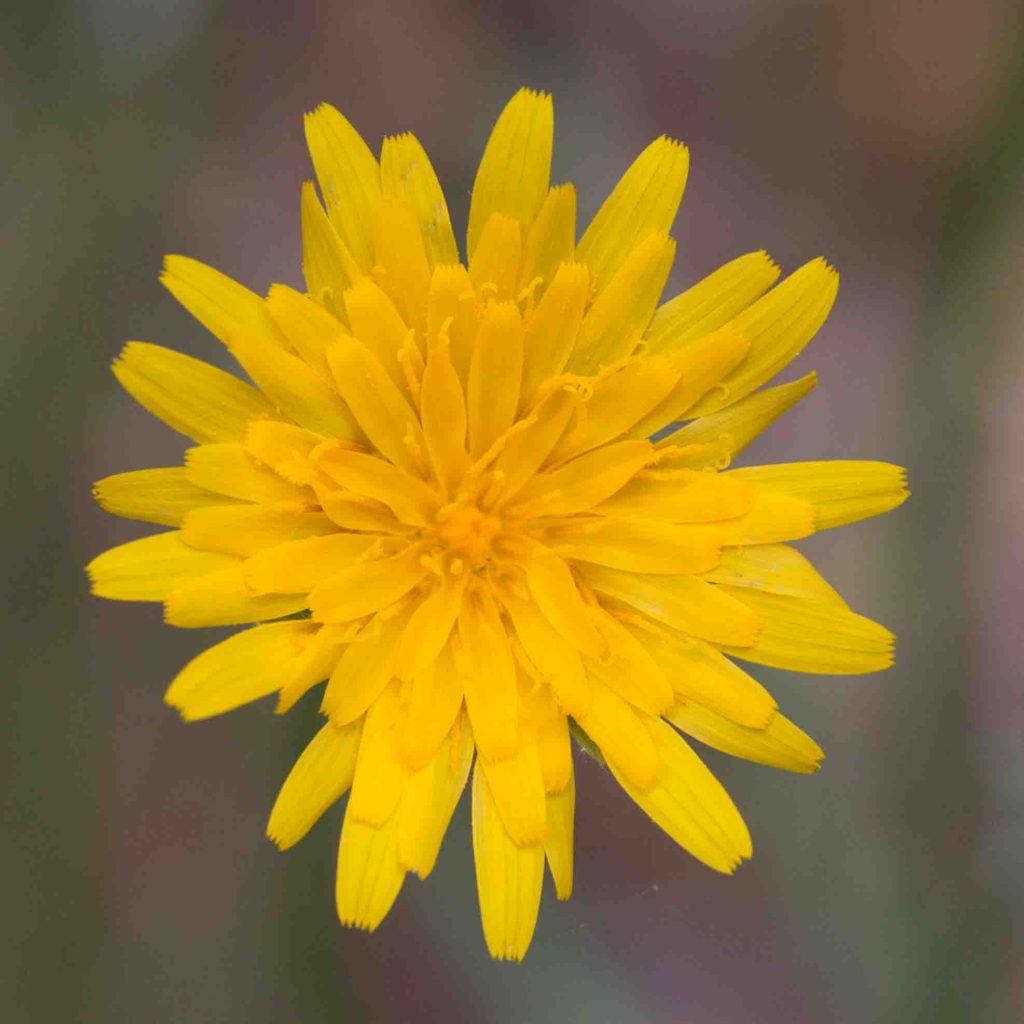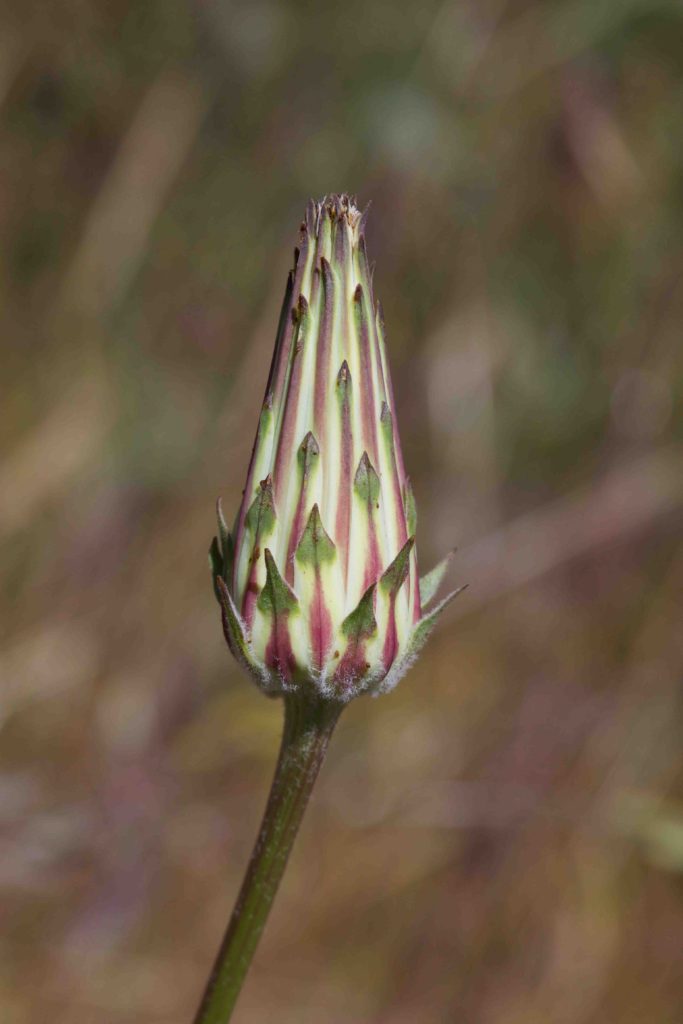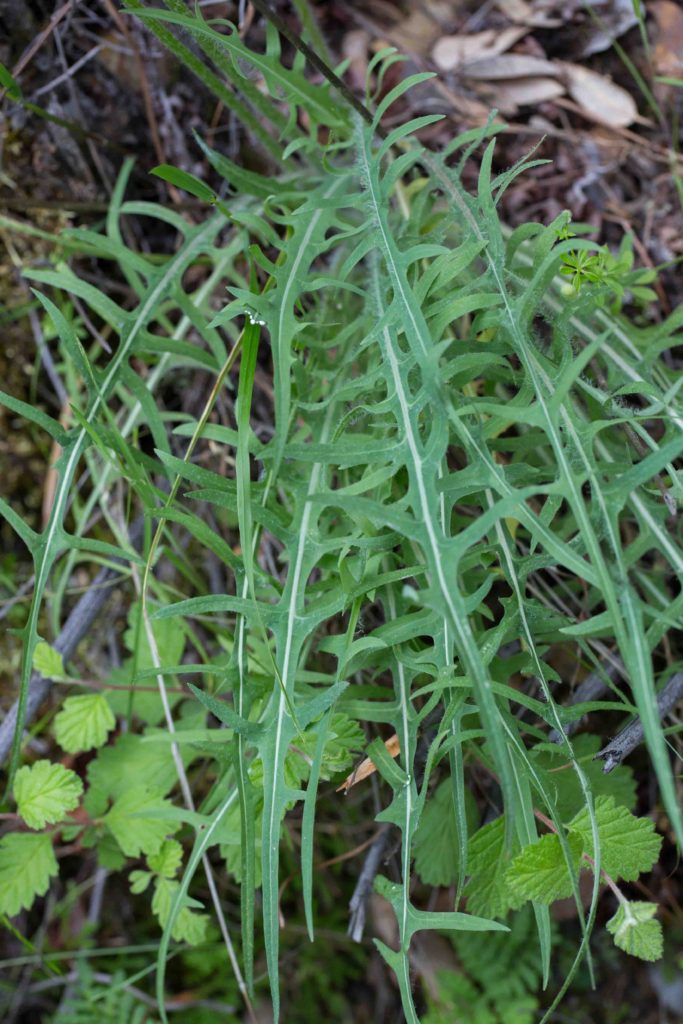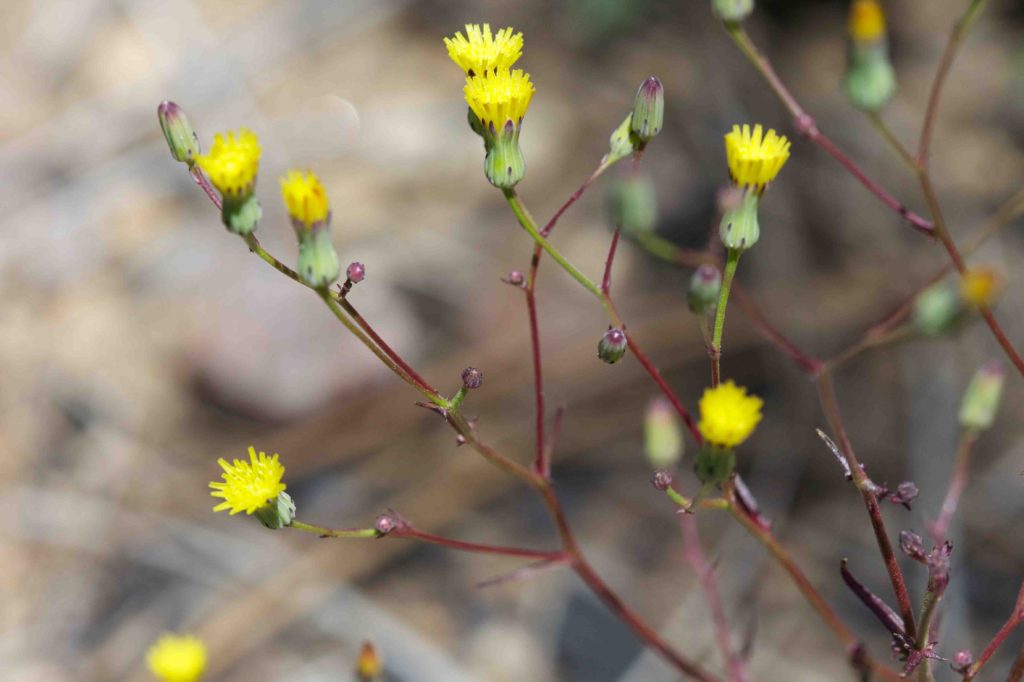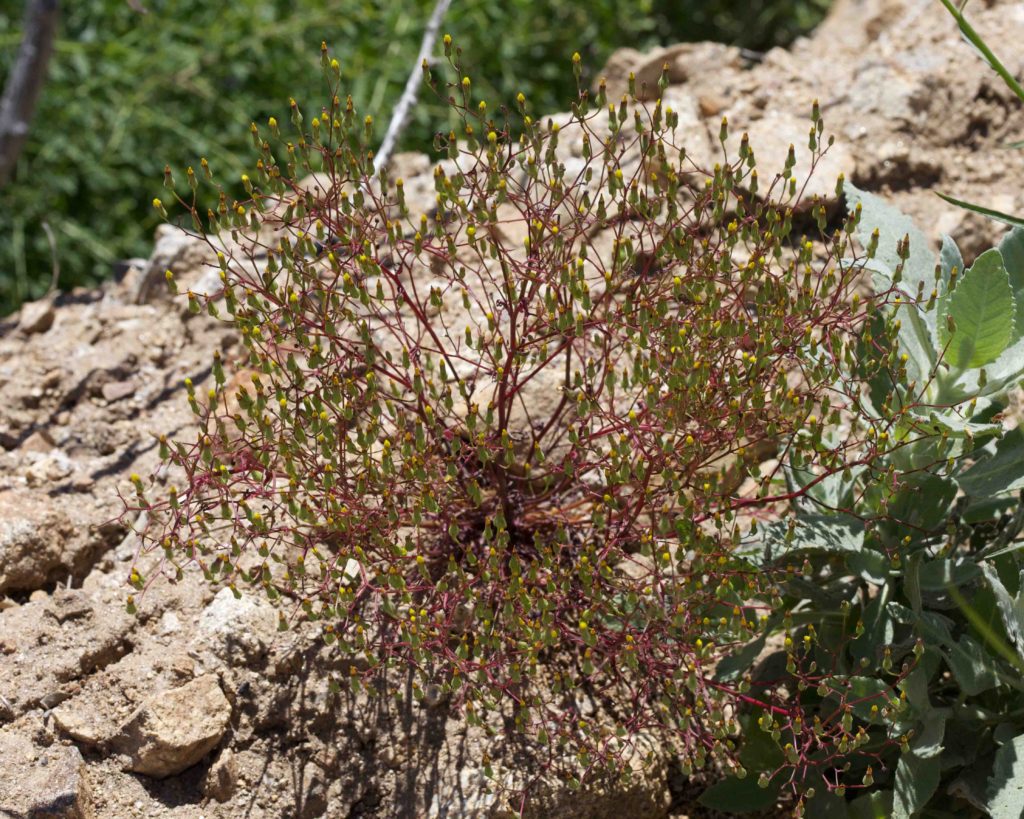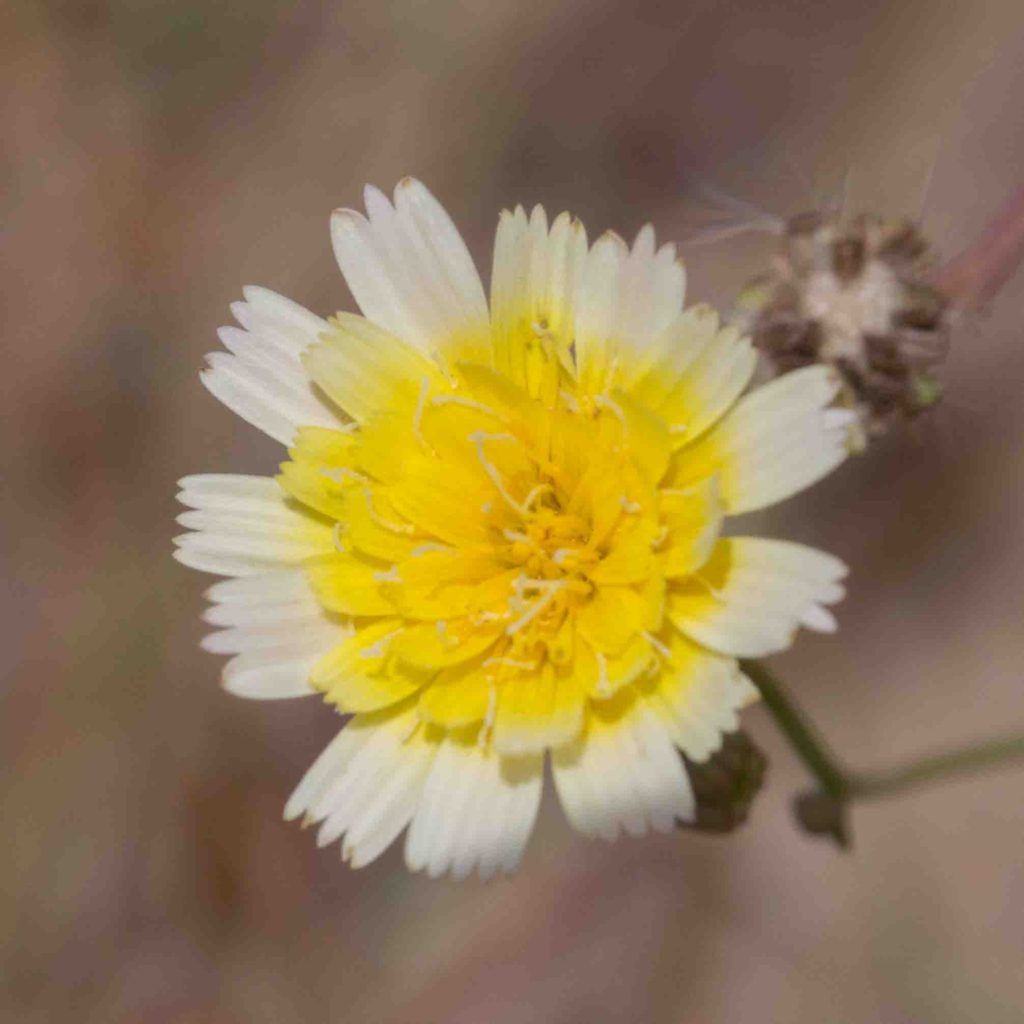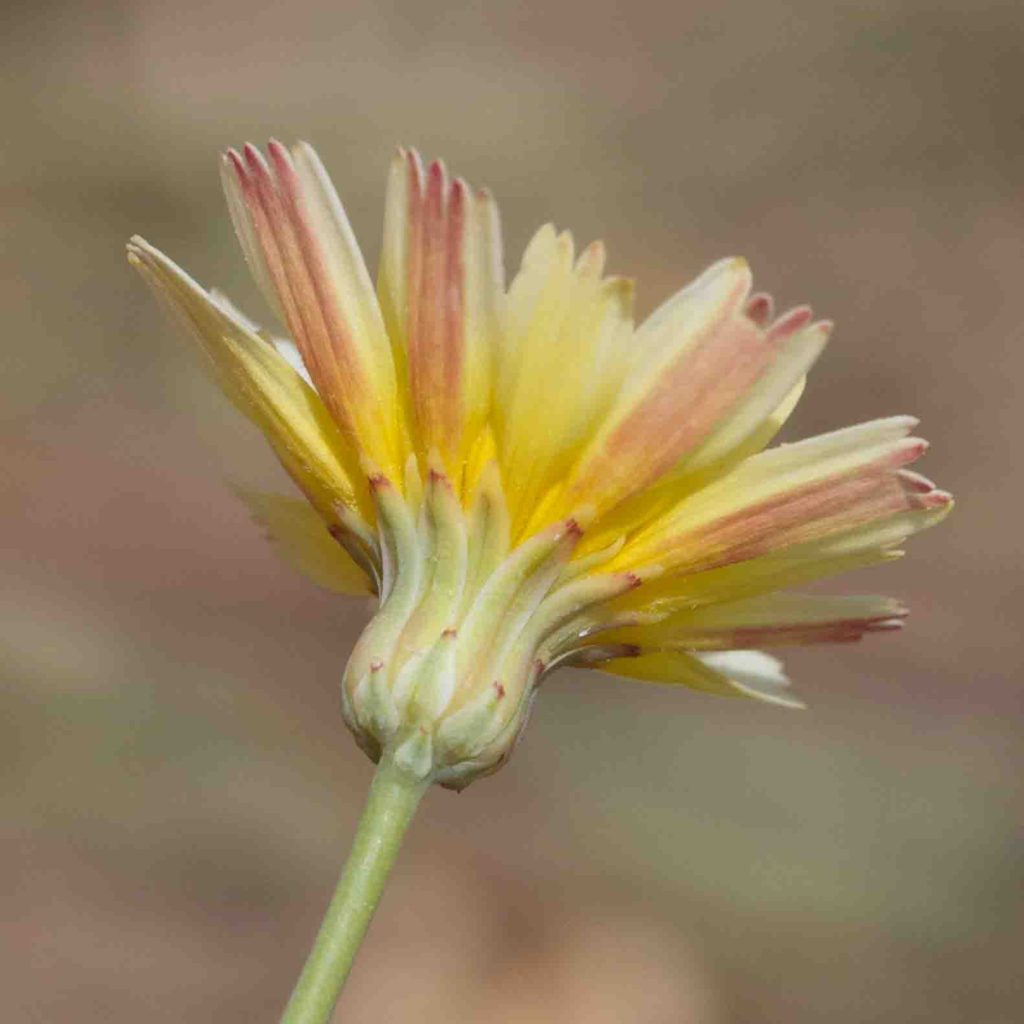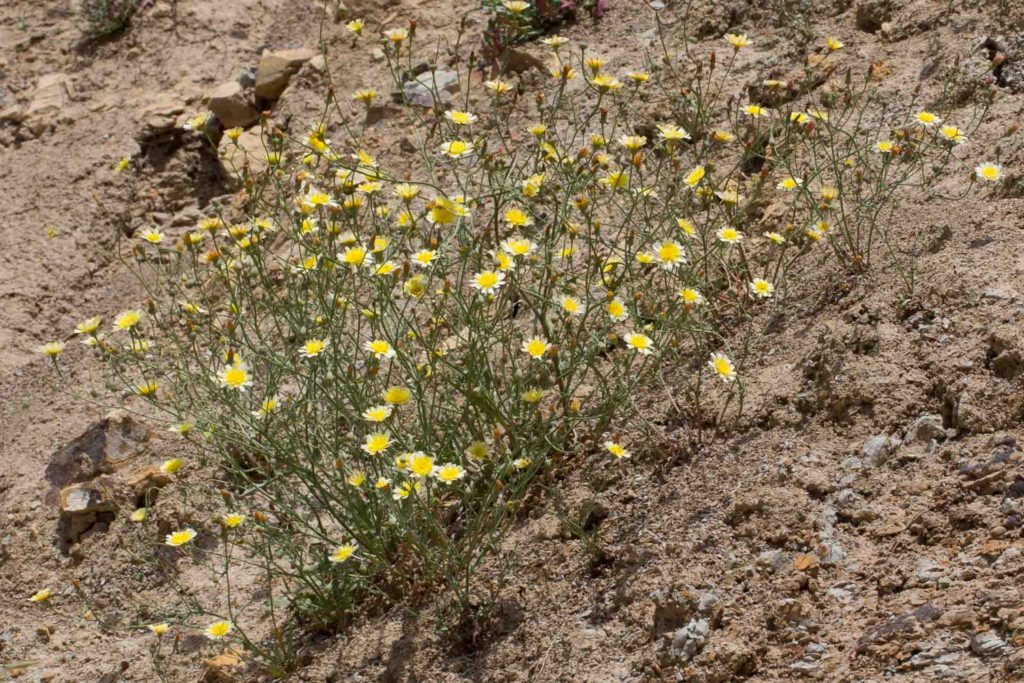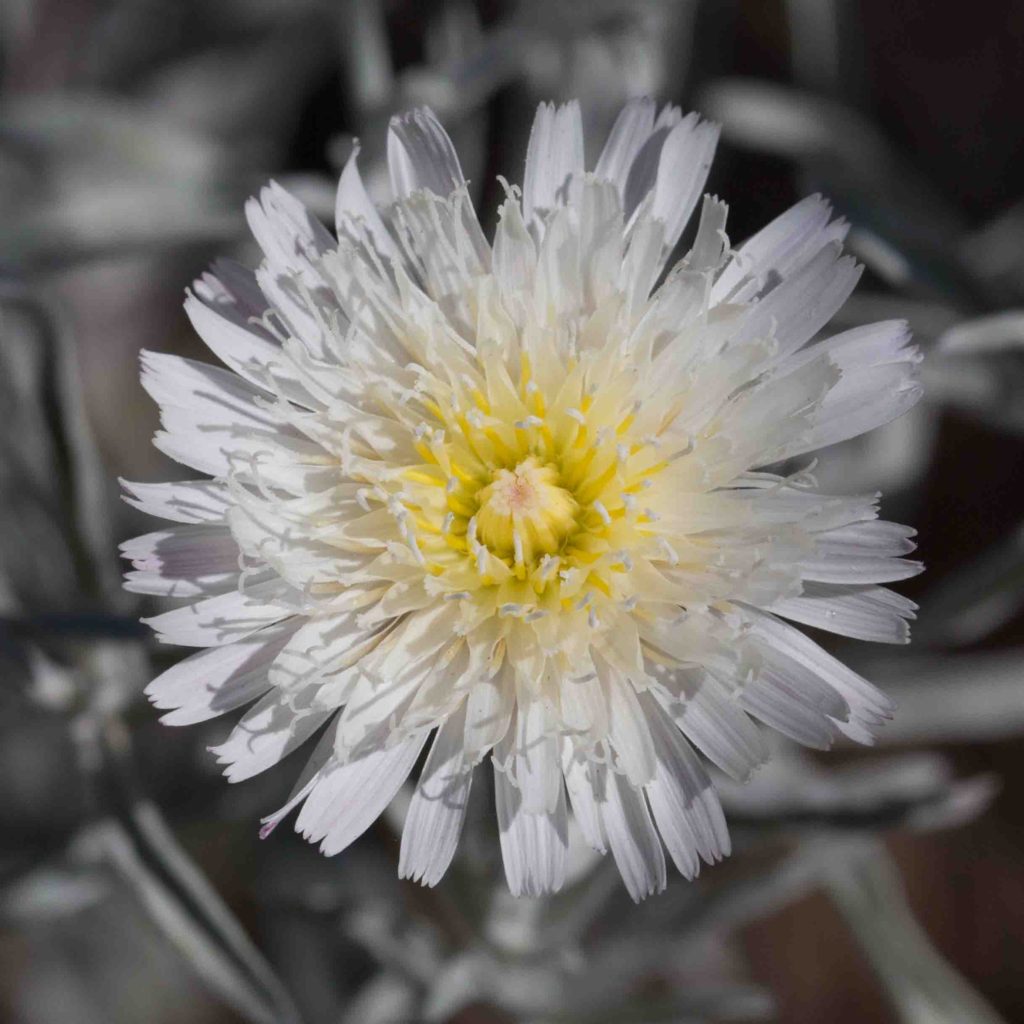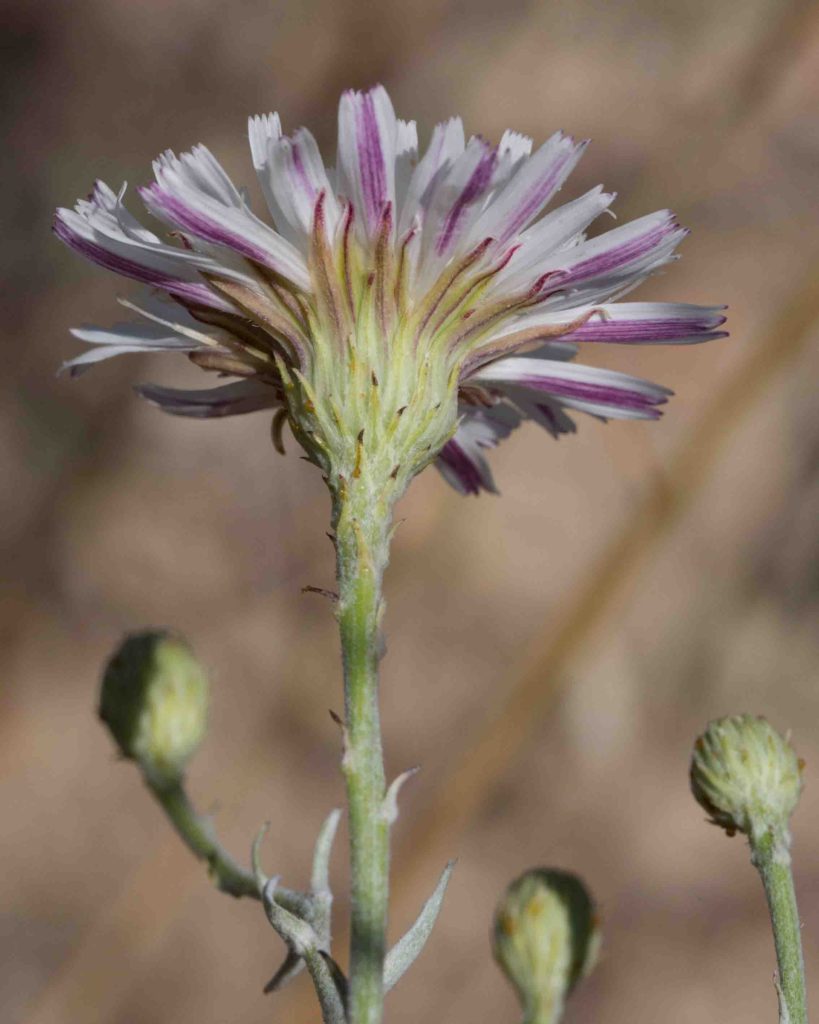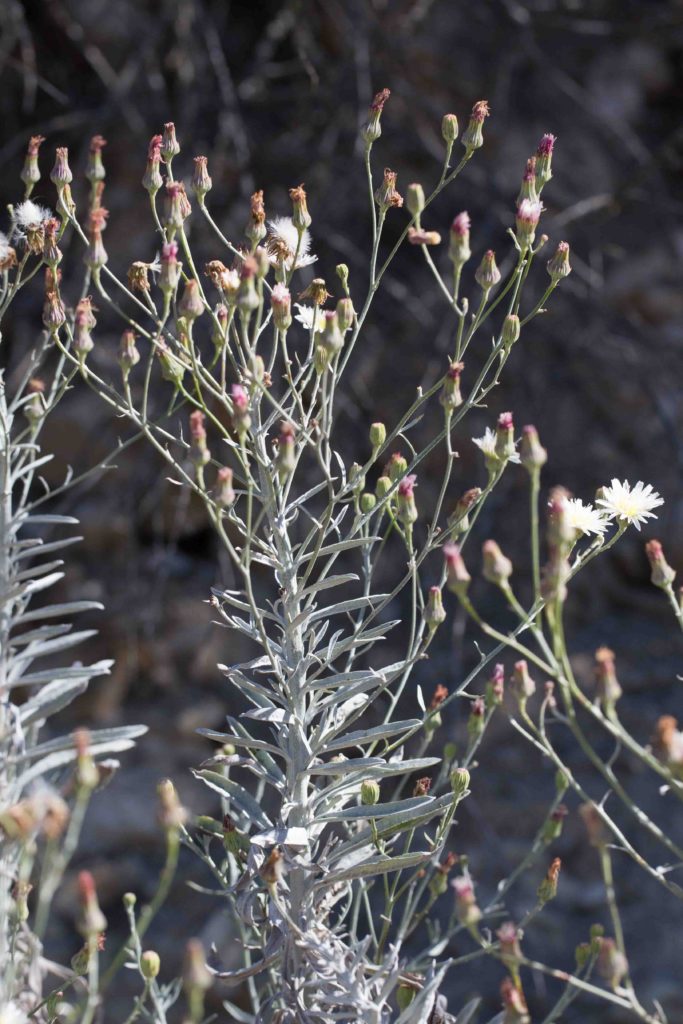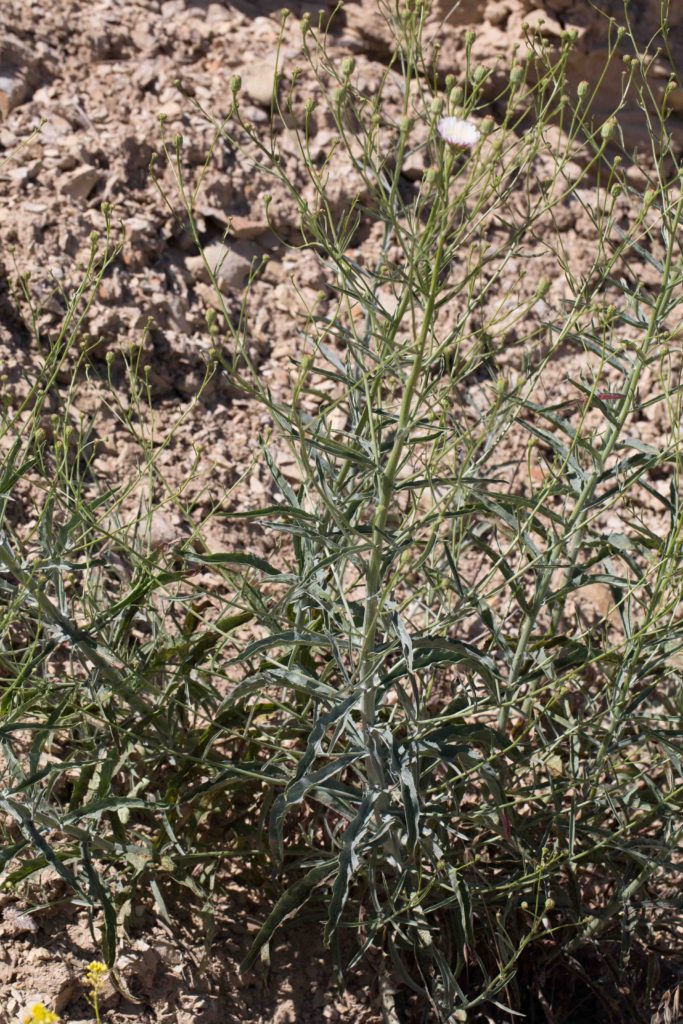Asteraceae: Sunflower Family – Cichorieae (Dandelion) Tribe: Agoseris & Malacothrix
The Sunflower family is a very large family with over 25,000 members. Botanists subdivide the family into a number of tribes, of which 14 are present in Monterey County. The Cichorieae (Dandelion) tribe has several distinctive features. First, they all have stems with milky sap. Second, they do not have disk and ray flowers like typical daisies. Instead they have “ligules”, which resemble strap-like ray flowers. Unlike ray flowers, ligules have both male and female parts – a necessity for reproduction in the absence of disc flowers. A third difference is that ray flowers have 0–3 lobes at the tip; ligules have 5. This page covers two native genera, Agoseris and Malacothrix.
Seaside Dandelion – Agoseris apargioides var. apargioides
Blooms:
Apr–May
Plant Height:
10–45 cm
Flower Size:
Medium
Origin:
Native
Habitat:
Coastal dunes & sandhills
Notes:
This plant has a typical dandelion flower, with a peduncle up to 45 cm. It is most easily recognized by its rosette of leaves, which may be half buried in the sand. The receptacle is hairy, and some phyllaries may be purplish. The leaves are bluish-green, and usually oblanceolate but may be linear. Although the leaves look basal, they are actually terminal, with the stem typically buried in the sand. Photos #1, 2 and 4 by CJH.
Large-flowered Agoseris / Giant Dandelion – Agoseris grandiflora var. grandiflora
Blooms:
Mar–June
Plant Height:
25–85 cm
Flower Size:
Large
Origin:
Native
Habitat:
Open, grassy places
Notes:
A large, classic dandelion flower. The head is comprised of 150-500 ligules. The bud has a tomentose base, and is long and gently tapered. The phyllaries are red-striped and slightly recurved. The seedhead is a large, puffy globe. The beak of the fruit is normally 3–4 x the length of the body, and tapers into it. The long, oblanceolate leaves have sharp teeth, either at right angles to the leaf, or pointing forwards. These teeth are an important point of difference from the Spear-leaved Agoseris (Agoseris retrorsa, see below). Photo #2 by CJH.
California Annual Agoseris – Agoseris heterophylla var. cryptopleura
Blooms:
Apr–June
Plant Height:
5–40 cm
Flower Size:
Medium
Origin:
Native
Habitat:
Many open habitats
Notes:
This and Annual Agoseris (Agoseris heterophylla var. heterophylla) are both much smaller than Large-flowered Agoseris (Agoseris grandiflora, see below), with many fewer ligules. This variety has 20–100 ligules, 10–15 mm long. They are much longer than the involucre. By comparison, Annual Agoseris has 20–50 ligules, 2–6 mm long, about as long as the involucre. Phyllaries are green, or rosy-purple with green margins. Leaves are oblanceolate; 25 cm long and generally with 3–5 pairs of lobes.
Spear-leaved Agoseris – Agoseris retrorsa
Blooms:
Apr–June
Plant Height:
5–40 cm
Flower Size:
Medium
Origin:
Native
Habitat:
Open grassy places above 900 m
Notes:
Similar to the Large-flowered Agoseris (Agoseris grandiflora, see above), but many fewer (30–100) ligules. The phyllaries have ciliate margins, and are rosy-purple towards their base (except for the margins), occasionally green. The leaves are spear-shaped, with white hairs and backward-pointing lobes. The tip of the fruit is more or less truncate, unlike the gently tapering tip of the fruit of Large-flowered Agoseris. The color of the phyllaries and shape of the leaves differentiate this species from other Agoseris.
Cleveland’s Malacothrix – Malacothrix clevelandii
Blooms:
Mar–June
Plant Height:
up to 40 cm
Flower Size:
Small
Origin:
Native
Habitat:
Burns and cleared areas, generally chaparral
Notes:
Flowers are smaller than most other Malacothrix. The plant has basal leaves, and much reduced cauline leaves. The plant is small and glabrous with many heads at the tips of panicle-like clusters. The outer ligules are slightly exserted. The outer phyllaries are less than ½ as long as the inner.
Woolly Malacothrix – Malacothrix floccifera
Blooms:
Mar–Nov
Plant Height:
up to 45 cm
Flower Size:
Medium
Origin:
Native
Habitat:
Sandy places, mostly interior
Notes:
Flowers are white (sometimes pale yellow) with the outermost ligules exserted by 5–9 mm. The underside of the ligules is pale orange-red. Leaves are basal, fleshy and more or less oblong with wide, toothed lobes. There are woolly tufts of hairs on the undersides of the leaf lobes – hence the plant’s common name.
Carmel Valley Malacothrix – Malacothrix saxatilis var. arachnoidea
Blooms:
May–Aug
Plant Height:
30-100 cm
Flower Size:
Medium
Origin:
Native
Rare?
Yes – 1b.2
Habitat:
Rocky, open banks (Carmel Valley Road)
Notes:
This is a leafy, densely tomentose perennial to subshrub, found in very few places outside Carmel Valley. Leaves are narrow, with acute tips, the lower leaves sometimes toothed, the upper entire. Flowers are white with red or purple stripes on the underside of the ligules.
